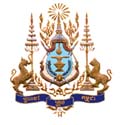 Space
Program of Cambodia
Space
Program of Cambodia
------The Cambodian Space Agency------
|
Level = 0 Development: Very Low
What has been going on in Cambodia?
What kind of space power do they have?
Does Cambodia have space weapons?
What are they planning over there? |
|
Population: 14,500,000 / Language: Khmer / GDP: $2000 / Cities: Phnom Penh
Cambodia's Space Infrastructure
Cambodia is troubled by the ongoing insurgency throughout the country against the occupation of it by American forces. Its space program is not suprisingly, nonexistent. Not only does it not have an agency, but also not much of an infrastructure in which one would arise. The Royal University of Phnom Penh offers a degree in engineering but nothing specific to space related educational architecture, such as astrophysics, astronomy, astronautics or aeronautics. It focuses mostly on agriculture in this rural, mountainous country. The government has no ministry devoted to science of this type.
|
None
|
|
Timeline of Events in Cambodia ...From the Past to the Future
|
TODAY AND INTO THE FUTURE
Nothing Planned
|